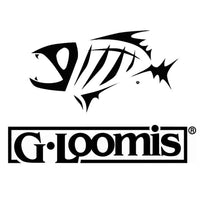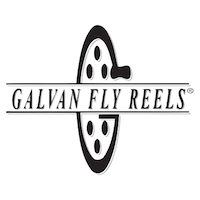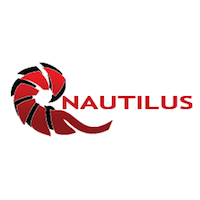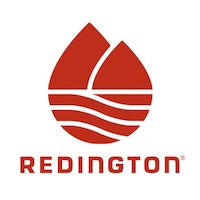 Every year it gets harder to find out of the way fishing and hunting locations. We’d all like to get the most from the limited time we spend afield, so our scouting efforts need to be effective and efficient. Scouting a location is a necessary part of being successful, but sometimes we’re limited by what we can see from the road, time constraints, access limitations, and physical ability. I’m sure we’d all like to know what’s on the other side of the mountain without having to physically go there.
Every year it gets harder to find out of the way fishing and hunting locations. We’d all like to get the most from the limited time we spend afield, so our scouting efforts need to be effective and efficient. Scouting a location is a necessary part of being successful, but sometimes we’re limited by what we can see from the road, time constraints, access limitations, and physical ability. I’m sure we’d all like to know what’s on the other side of the mountain without having to physically go there.
 Fairly recent technological advances provide us with opportunities to do some very in depth exploring from the comfort of our own homes. Becoming acquainted with them will greatly increase your chances of finding that next honey hole.
Fairly recent technological advances provide us with opportunities to do some very in depth exploring from the comfort of our own homes. Becoming acquainted with them will greatly increase your chances of finding that next honey hole.
I’ve been using the computer to pre-scout for quite a while now and it’s proven invaluable, especially when venturing out of my home region in search of game with fins, feathers, or fur. Although I may not be able to see actual fish from the satellite images, I can get a feel for what the water and surrounding landscape may look like before seeing it in person.
 Locating the area I plan to visit using both satellite and topographic views is the first step in my research. The satellite obviously gives me a bird’s-eye view while the topographic map is helpful when certain features are hidden by things like tree cover, snow, or clouds. It also shows elevation changes that may not be evident from directly overhead. Blue-lining trout fishermen (those that enjoy exploring those little blue lines on a map that indicate obscure and often times lightly fished small streams) will definitely appreciate knowing the elevation changes when it comes to trekking between points A and B.
Locating the area I plan to visit using both satellite and topographic views is the first step in my research. The satellite obviously gives me a bird’s-eye view while the topographic map is helpful when certain features are hidden by things like tree cover, snow, or clouds. It also shows elevation changes that may not be evident from directly overhead. Blue-lining trout fishermen (those that enjoy exploring those little blue lines on a map that indicate obscure and often times lightly fished small streams) will definitely appreciate knowing the elevation changes when it comes to trekking between points A and B.
Once I find a place I want to visit, I begin looking for access points. These may be boat ramps, walking trails, or even parking lots alongside the canal, lake, or river I’m interested in. Convenience and security are my main concerns at this point. Can I park without being towed? How far or difficult is it to reach the water? Are restrooms nearby? It’s helpful to figure these things out beforehand.





Next, I’m going to use the street view, if available, to get a real feel for the area and the nearby surroundings. From this level I can normally see things like “No Trespassing” signs along with state and local government signs and placards. It’s helpful when looking at roadside pull offs and access trails because I can tell if there’s a gate, ample room to safely get off the road, or even a fence that might prevent access to the place I’m thinking of visiting. Reading the particulars on a sign may not be possible, but I can distinguish colors and patterns. Signs of this type are obvious and checking them out while at home might prevent a headache later.
 Saving or otherwise marking locations I want to visit in an application or dedicated GPS is my next step. This allows me to plot a route from where I’m staying to the first fishing spot, or from one spot to the next. This is especially useful when I’m canal hopping in south Florida and may visit as many as eight or nine locations across three counties in one day. I just designate the next fishing spot as my new destination and allow the system to plot the route. The same thing can be done with a waterborne GPS, but with the added ability to assign waypoints. Waypoints are mid-route destinations along a given path that help you to control the path. You have to hit each of them in succession to ensure that you remain on the proper course. This is especially critical where channels are narrow, obstructions are involved, and navigation mistakes could be costly.
Saving or otherwise marking locations I want to visit in an application or dedicated GPS is my next step. This allows me to plot a route from where I’m staying to the first fishing spot, or from one spot to the next. This is especially useful when I’m canal hopping in south Florida and may visit as many as eight or nine locations across three counties in one day. I just designate the next fishing spot as my new destination and allow the system to plot the route. The same thing can be done with a waterborne GPS, but with the added ability to assign waypoints. Waypoints are mid-route destinations along a given path that help you to control the path. You have to hit each of them in succession to ensure that you remain on the proper course. This is especially critical where channels are narrow, obstructions are involved, and navigation mistakes could be costly.
 Lastly, I’ll zoom in to look at the water itself. Satellite views can give an overall lay of the land and show you some features above and below the water’s surface that may be of importance. Channels, sand and oyster bars, rip-rap shorelines, culvert pipes, reed lines, downed trees, boulders, lily pads, and many other features may be visible depending on the quality of the satellite image and the clarity of the water.
Lastly, I’ll zoom in to look at the water itself. Satellite views can give an overall lay of the land and show you some features above and below the water’s surface that may be of importance. Channels, sand and oyster bars, rip-rap shorelines, culvert pipes, reed lines, downed trees, boulders, lily pads, and many other features may be visible depending on the quality of the satellite image and the clarity of the water.
Now that I’ve mentioned image quality it seems prudent to remind everyone that you cannot blindly accept that what you see on the computer is exactly like what you’ll experience in person. Conditions at the time an image was taken, such as foliage color and amount, snow cover, tidal stage, water levels and color, wind direction, cloud cover, and various other factors, affect the details shown and thus its usefulness as a scouting tool. Every image should be viewed with the understanding that sand bars move, rivers flood and alter course, trees are cut down, grass flats disappear, condominiums are built, and hurricanes destroy mangrove islands.
Some mapping apps allow grouping and sharing/exportation of saved or pinned locations. This is great if you’re caravanning with a bunch of folks and you’d like everyone to be working from the same map. Another big advantage of grouping your saved locations is the ability to hide one or more groups from view, effectively decluttering your map. You can even share your list with a safety contact so they have an idea of where to begin searching should you miss an end of the day check in.
None of this can truly replace seeing things with your own eyes, but it will help a lot when utilized correctly. Make this step a part of your trip planning and you’re sure to be rewarded.















Comments